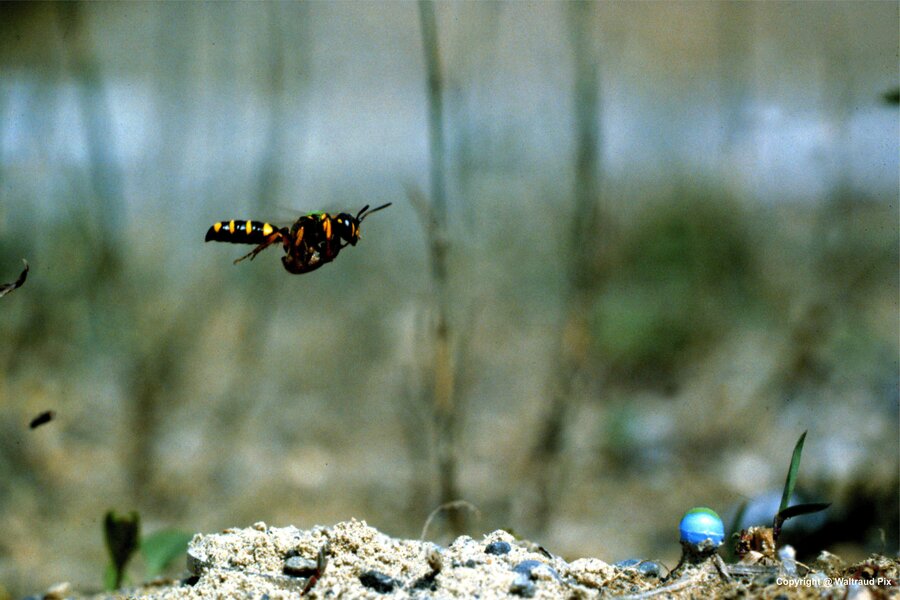A bug's-eye view: How do wasps find their way back home?
Loading...
By using high speed cameras to study the flight paths of ground-nesting wasps, researchers have identified techniques the insects use to navigate back to their nests after a day of foraging.
Wasps, like several other insects, like to take "test flights" before they leave their nests to ensure that they will remember the nest location when they return. Wasps have low-resolution vision, so they must identify distinctive features around their nests, such as stones or fallen leaves, to find their way home.
Scientists knew that they did this, but they didn’t know how. A team led by Jochen Zeil, an insect expert at the Australian National University in Canberra, used high-speed cameras to track the head movements and body position of wasps performing these test flights. They also built a 3D model to map their flight pattern. Dr. Zeil and his team described their findings in a paper published in the journal Current Biology on February 11.
The researchers saw that when wasps leave their nest, they turn around to face the entrance rather than facing out towards their destination. They fly in front of the nest in an arc, while watching the entrance and shifting their gaze from side to side. Then the wasps back away in increasingly wider arcs. The resulting path zigs and zags back and forth.
"While flying along these arcs, the insects see the nest environment from different directions and distances, and always keep the nest in their left or right visual field," Zeil told LiveScience in an e-mail.
By memorizing scene markers from various angles, the wasps are able to navigate their way back to the nest no matter where their foraging takes them.
“We were surprised by how precise the choreography of learning flights was,” Zeil told New Scientist.
This could apply to other nesting insects like bees and ants, theorize the researchers, and could also help improve navigation capabilities of flying robots.







